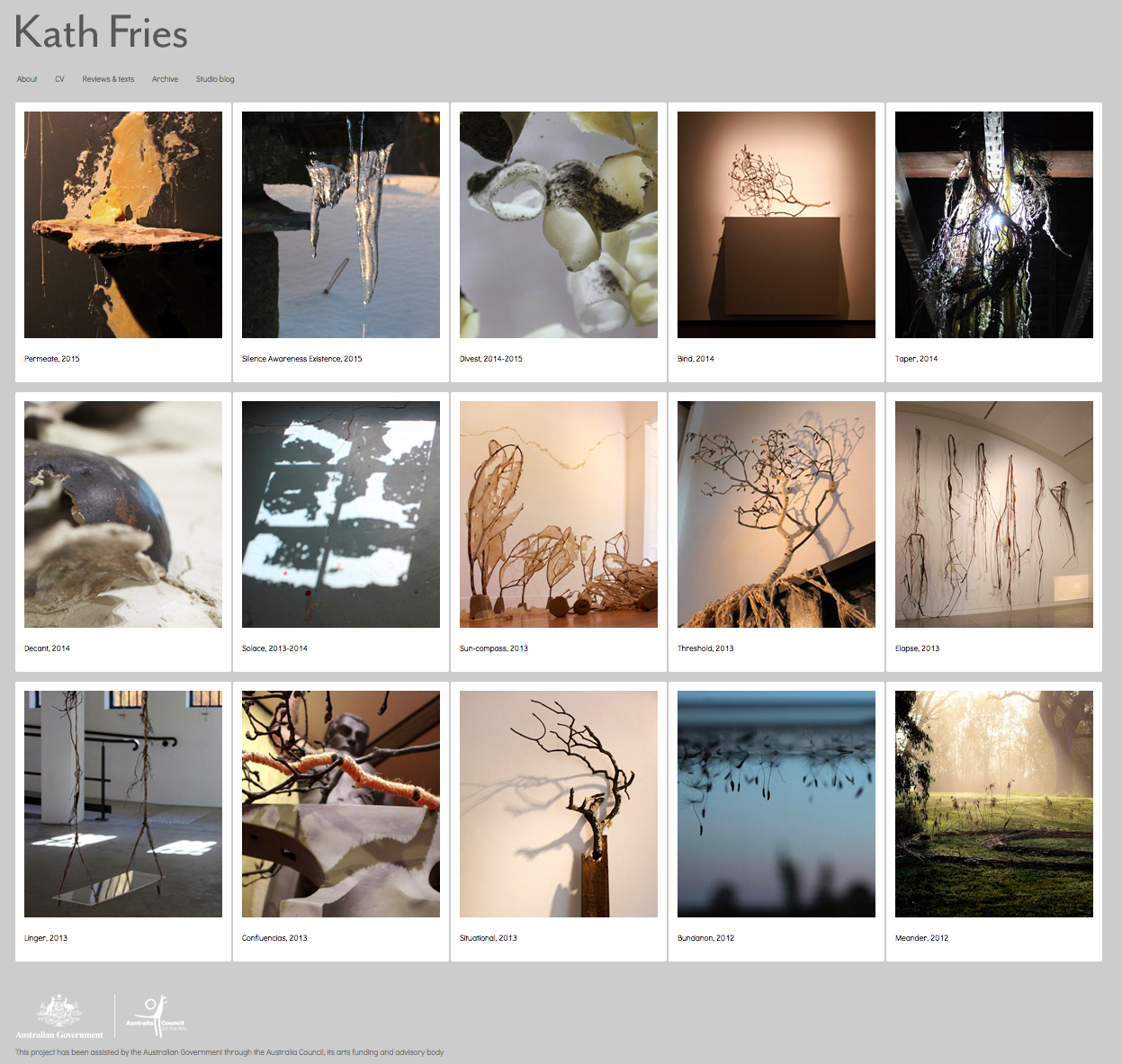My new work Enclose is currently being exhibited in Extreme Prejudice, curated by Nike Savvas for the 2018 Redlands Konica Minolta Art Prize at National Art School Gallery.
 |
| Kath Fries, Enclose, 2018, oyster mushrooms, beeswax and glass terrariums, 170x170x15cm |
Enclose is a continuation of my work with oyster mushrooms and beeswax, exploring how our senses are entangled with our material and immaterial surroundings. This wall sculpture is an attentive meditation that conjures ecological interconnections, specifically the complexities of human and nonhuman relationships. The dried oyster mushrooms in Enclose are ones that I have grown in previous installations. Mushrooms spring up rapidly – almost overnight – but these fascinating forms are actually just a small section of a much larger mycelium network, usually underground, hidden from human sight. Enclose considers our human habits of discrimination and valuing things only as separate entities, so the isolation of these fungi specimens belies how they really exist in the world. Yet the circular clock-like arrangement also suggests the passage of time, underlying cycles and bio-diverse connections. Enclose resonates with material metaphors that operate in several directions, drawing attention to the unique differences of each specimen and asserting that nothing can exist or evolve in isolation.
Redlands Konica Minolta Art Prize 2018
Exhibition Dates: Thursday 15 March — Saturday 12 May 2018
Opening & Prize Announcement: Wednesday 21 March, 6pm
National Art School Gallery, Forbes Street, Darlinghust NSW
Opening Hours: Monday–Saturday, 11am–5pm
Guest curator Nike Savvas invited 19 established artists who each nominated an early career artist to participate in this exhibition. This inter-generational pairing reflects the generative mentoring relationships in our artistic communities. Nike Savvas: “I have selected artists whose practices evidence discriminating, uncompromising and highly individualist approaches to art making. In a cultural climate beset by hype, hits, corporatisation and swinging social agency, the next iteration of this exhibition titled Extreme Prejudice seeks to highlight the personal and critical imperatives that belie and drive such single-minded work.”
Artists:
Richard Bell & Megan Cope
Vivienne Binns OAM & Jacob Potter
Vicente Butron & Gemma Avery
Richard Dunn & Adrian McDonald
Sarah Goffman & Connie Anthes
Agatha Gothe-Snape & Aodhan Madden
Gail Hastings & Dan McCabe
Tim Johnson & Hayley Megan French
Lindy Lee & Kath Fries
Stephen Little & Joe Wilson and Chanelle Collier
Jonny Niesche & Mason Kimber
John Nixon & Lucina Lane
Rose Nolan & Renee Cosgrave
Kerrie Poliness & Melissa Deerson
Elizabeth Pulie & Zoe Marni-Robertson
Huseyin Sami & Consuelo Cavaniglia
David Serisier & Oliver Wagner
Jenny Watson & Annie O’Rourke
Hilarie Mais & Conor O’Shea
































%2BWhite%2C%2BBRANCH%2B3d.jpg)














.jpg)














